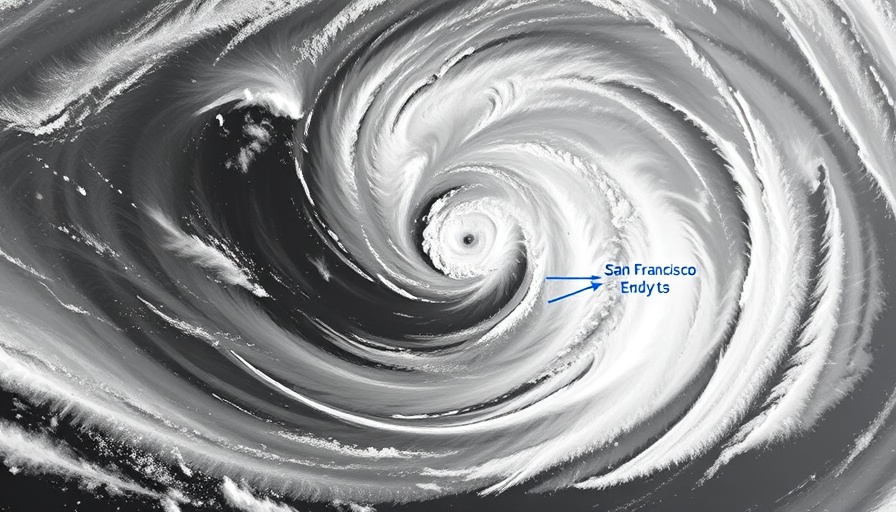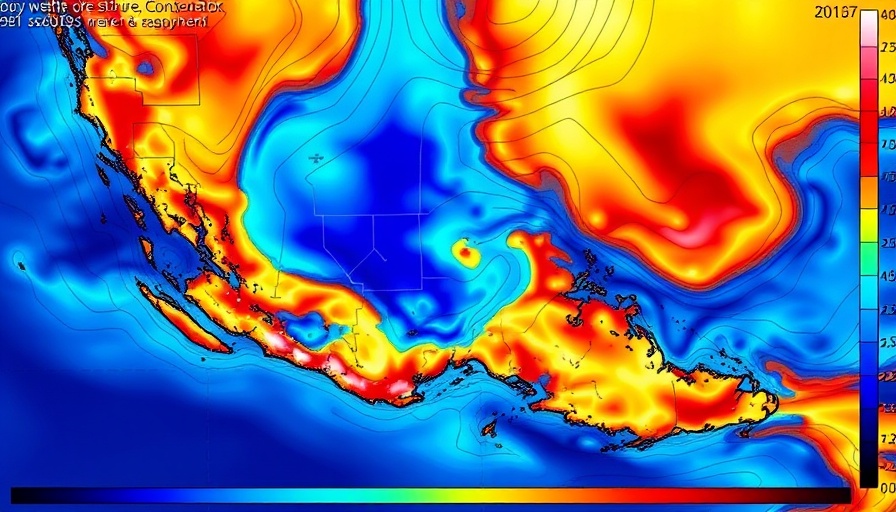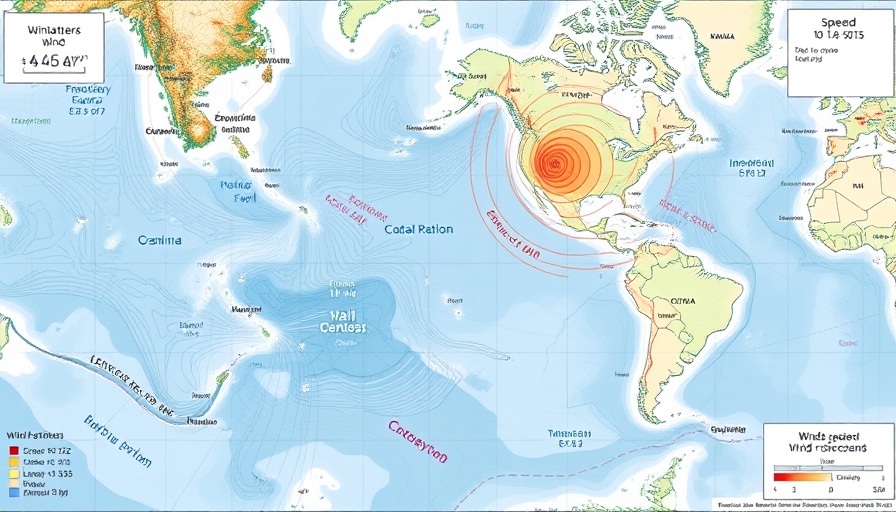
The Unusual Pulse of the Bay: Understanding the Anomalous Eddy
As the sun sets over San Francisco, the persistent winds usher in an extraordinary sight, courtesy of an anomalous counter-clockwise eddy lingering off the coast. For nearly two weeks, this meteorological phenomenon has disrupted typical summer weather, fostering strong southwesterly winds to flow into the Bay Area, altering everything from daily routines to local wildlife patterns.
What is an Eddy and Why Should You Care?
Simply put, an eddy is a swirling body of water or air that affects weather patterns. The current anomaly, influenced by the North Pacific High and the prevailing low-pressure systems in California's Central Valley, deviates from the seasonal norms. Residents of the high desert may wonder why this matter matters; understanding local weather variations helps inform us about environmental changes that may impact agriculture, water supply, and even recreational outings.
A Dive into the Science: How Wind Patterns Shift
In typical summers, the North Pacific High converts cool, moist air into characteristic northwesterly winds down California's coast. However, a ridge of high pressure has pushed this system further north, switching the wind direction and creating a localized trough along the Western slopes. This shift not only alters wind directions into the Bay but increases the chances of stronger winds that can impact local temperatures and moisture levels, echoing the interconnected nature of our environment.
Preserving Local Climate Awareness
For high desert residents, witnessing these changing winds reveals the broader narrative of climate change. Engaging with such occurrences can help foster community awareness about how our microclimates are shifting, sparking vital dialogue on ecological preservation efforts in our region. Understanding how these unsettled winds influence local ecosystems and resources can empower the community to promote sustainability initiatives.
Future Implications: What Lies Ahead in the Weather Forecast
The persistence of this eddy raises questions about the durability of such weather phenomena. Will we see more of this in the coming years? Monitoring these scenarios can lead to insights on climate variations and help scientists predict trends that will affect everything from agriculture to wildlife migrations.
How Can You Stay Informed and Engaged?
You can stay abreast of these events by following local climate blogs or joining community forums focusing on weather patterns and their implications. Engaging with local environmental organizations can also help ensure you're well-informed about climate impacts specific to your area.
Conclusion: The Winds of Change and Community Action
As we marvel at the effects of the anomalous eddy off San Francisco's coast, it serves as a reminder of the delicate balance of our environment. By staying informed and advocating for sustainability, we can foster a community ready to face the shifting climate realities.
 Add Row
Add Row  Add
Add 




Write A Comment